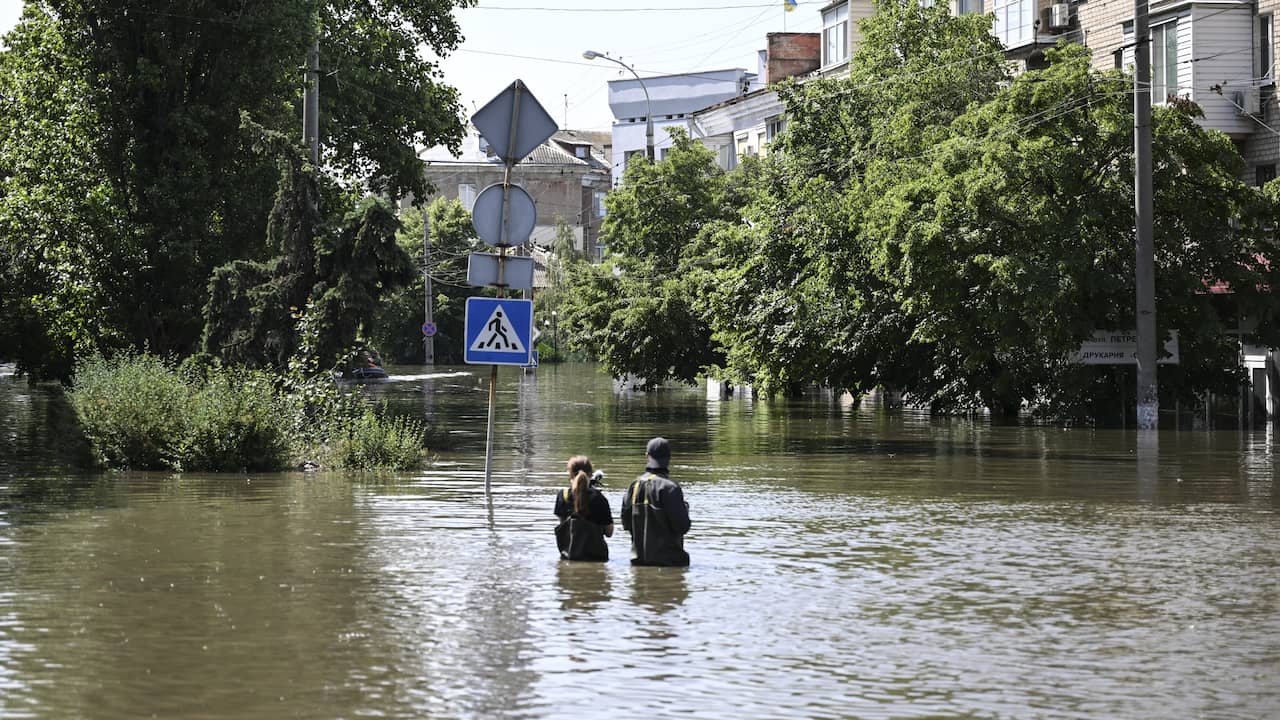The war in Ukraine has so far claimed tens of thousands of lives and destroyed crucial infrastructure. But the conflict is also causing unprecedented damage to the climate and the environment. And that not only has local consequences.
In a year’s time, the war in Ukraine released about 120 million tons of CO2 into the atmosphere. That is comparable to the annual emissions of the whole of Belgium, let one recent rapport of an international group of scientists.
“The climate impact of war is still a blind spot, while it ultimately affects us all,” says lead author Lennard de Klerk to NU.nl. “We need to reduce global emissions quickly and drastically before 2050, but this war is causing the opposite.”
It is complex to conduct research into the climate and environmental impact of a war that is still in progress. But that doesn’t mean it’s impossible, the report shows. Almost immediately after the invasion of Ukraine, the Dutch-Ukrainian research group led by De Klerk started monitoring greenhouse gas emissions in Ukraine.
Green reconstruction crucial to reduce emissions
They did this using open sources, such as satellite data. For example, they could see which military equipment was used and calculate its ecological footprint.
The researchers also looked at the climate impact of the explosions at the Nord Stream pipeline, refugee flows, wildfires caused by explosions and the closed airspace above Ukraine and parts of Russia. As a result, international flights have been diverted for months, causing more greenhouse gas emissions.
By far the greatest climate impact is yet to happen. “We expect the future reconstruction of Ukraine to be the most emitting,” says De Klerk. Here’s the thing: due to the enormous damage to the country, buildings and infrastructure will have to be rebuilt for years to come. That is why a lot of new building material has to be produced. There is much to be gained in terms of sustainability, the researchers argue.
The country itself also has an interest in this, thinks De Klerk. “Just to be allowed to join the European Union, a sustainable reconstruction is a requirement.”
In the next report, the researchers will therefore take a closer look at ways to approach reconstruction as greenly as possible. The new report is expected to be presented this fall at the climate summit in Dubai.
Dam destruction is gigantic environmental disaster
In addition to the climate, the environment is also being hit hard by the ongoing conflict. A recent example is the attack on the Kachovka dam in the south of the country. Both the World Bank and Ukrainian organizations say the impact of that blast is irreparable to humans and animals. Local organizations hold Russia responsible for a large-scale ‘environmental crime’.
Wim Zwijnenburg conducts research for the peace organization PAX into the environmental risks of the destroyed dam. Because the breakthrough is so recent, he says it is difficult to draw conclusions. “But we know that Ukraine is a very industrialized country,” says Zwijnenburg. “When oil and toxic substances from industrial storage are released by the risen water, it causes enormous damage.”
The organization is currently working with local authorities to map out the impact of the destruction of the dam on nature reserves, forests, water reservoirs or agricultural land. “The environment is often a silent victim of war,” says Zwijnenburg.
“There’s no question that this war is already a massive environmental disaster. It’s going to take a generation to fix.”
A flooded neighborhood in Kherson after the destruction of the dam. Photo: Getty Images
2023-07-09 03:07:16
#Climate #environment #silent #victims #war #Ukraine #climate


